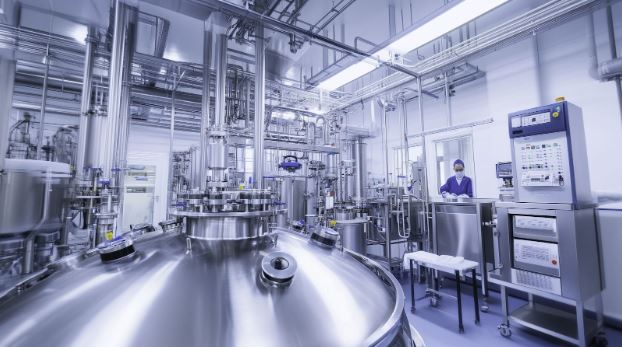Pharmaceutical production is one of the most critical industries when it comes to safety and waste management due to the precision required to meet product safety and efficacy. That’s precisely why pharmaceutical plants should invest in high-grade waste storage tank cleaning!
Different types of waste could be hazardous when combined or left to fester which is why the Waste storage should be monitored and kept clean regularly.
The Importance of Waste Storage Tanks in Pharmaceutical Plants
Waste storage tanks are a necessary solution in the pharma industry because they have the capacity to safely contain byproducts from drug manufacturing, including chemical ingredients and solvents. These tanks are sturdy and designed to prevent contamination by safely securing waste.
Further, their usage helps to maintain workplace safety and reduces environmental contamination. By properly overseeing and cleaning these tanks, pharma plants can store waste securely and prevent leaks and cross-contamination.
Overall, by investing in waste storage cleaning, pharma manufacturers can meet regulatory compliance while maintaining top-notch product quality.
1. Hazardous vs Non-Hazardous Waste
Pharma waste can be toxic (hazardous) or organic (non-hazardous). Managing hazardous waste is of primary importance when it comes to securing pharma production from contamination and the subsequent loss of resources.
Some of the most hazardous waste comes from chemicals such as solvents, bases, and reactive substances. In addition, biological waste like contaminated cultures, bacteria, and even viruses, can pose big dangers to workers and production.
For non-hazardous waste, precautions should still be taken. Plant-based ingredients and wastewater can also contribute to violations, therefore managing all types of waste is quite important.
In essence, no matter what type of pharmaceutical waste is stored, the industry should prioritize frequent waste storage tank cleaning in order to protect its reputation and bottom line.
2. Lessons Learned From Negligence
Since we work with many different industries, we are often privy to stories of the consequences that industries face when they don’t take industrial cleaning seriously. For this particular example, let’s discuss the case study of Ben Venue Laboratories, which had to shut down in 2011 due to contamination issues.
What happened with this injectable drug manufacturer is that the FDA found enormous microbial contamination issues in its waste management areas, a problem that forced the production to a halt.
The result of this safety breach was a nationwide recall of the company’s cancer drugs since the company was one of the only few manufacturers of these medications.
In essence, this is one of many cases that illustrates what happens when pharma industries neglect waste storage tank cleaning and jeopardize drug safety. Not only are customers affected, but these mishaps also lead to massive financial loss.
The Risks of Neglecting Waste Storage Tank Cleaning
1. Contamination of Pharmaceutical Products
Waste build-up in storage tanks is the most pertinent cleanliness issue that pharma industries need to address to ensure the purity of their products. Even minuscule amounts of chemical or biological residue can transform the effectiveness of drugs and pose serious health risks to consumers.
That’s why proper tank sanitation is essential to meet stringent industry standards in place and protect consumers. Manufacturers that neglect the highest levels of sanitation not only risk legal fines and financial set-backs but also consumer trust and reputation.
2. Regulatory Non-compliance
All pharmaceutical manufacturers are required to follow regulatory guidelines set by the FDA, the EPA, and OSHA. The good news is that following stringent waste storage cleaning guidelines will meet all the regulatory policies outlined below! That being said, let’s look at some of the standards set for pharma industries.
The FDA sets guidelines concerning manufacturing practices, drug safety testing, labeling requirements, and proper storage and handling to align with public health measures.
The EPA is dedicated to environmental conservation and mandates pharma drug industries to focus on the safe disposal of toxic waste, prevention of water and air pollution, and chemical safety.
OSHA requirements are closely related and include worker safety criteria for handling hazardous chemicals, ventilation and exposure standards, use of safety equipment, and biohazard control.
Due to these policy legislations, neglecting waste storage tank cleaning can result in drastic consequences like costly fines, legal penalties, and even facility closure.
3. Health and Safety Risks
Exposure to poorly kept waste storage tanks can pose serious risks to workers’ health if hazardous substances are not disposed of properly. The most common health issues workers can experience are respiratory problems, chemical burns, and other chronic long-term health complications that can occur years later and that are not immediately connected to the inhalation of toxic fumes at the production line.
Routine cleaning of the waste storage tanks minimizes these risks and protects workers from potential harm. These precautions can protect the industry in the long run from personal injury lawsuits associated with exposure.
4. Operational and Environmental Impact
Neglectful tank practices also lead to faster wear-and-tear of production equipment. Poorly maintained waste storage tanks can cause leaks, equipment breakdowns, and malfunction.
Likewise, waste buildup can lead to environmental pollution by contaminating nearby soil and water sources.
Overall, frequent cleaning will take care of these potential mishaps and contribute to smooth operations and environmental sustainability.
3 Best Practices for Waste Storage Tank Cleaning in Pharmaceutical Plants

1. Establishing a Cleaning Schedule
Regular and consistent waste storage tank cleaning is the answer if you want to stay compliant with consumer, worker, and environmental safety. By creating a manageable cleaning schedule, you can ensure that the tanks are always in spotless condition. This will help detect any minor issues before they become big problems.
2. Choosing Proper Cleaning Methods & Equipment
The application of the optimal cleaning means is essential to attain the highest levels of sanitation. In the pharma industry, it is recommended to use high-pressure washing and chemical cleaning that will break down chemical deposits. This cleaning method can be done using automated or manual scrubbing systems that remove stubborn impurities.
The subsequent cleaning phase would be rinsing and neutralization. These procedures use deionized or purified water to rinse away cleaning solutions and residual amounts left behind. Finally, drying is employed to completely dry the storage tanks and prevent any microbial growth.
To determine that the tanks are clean to the level of compliance, they undergo testing before being reused.
3. Training and Employee Involvement
But tank cleaning doesn’t have to only be delegated to industrial cleaners. You can employ your employees to keep tanks properly maintained between cleanings. This can look like training them to maintain the highest standards of cleanliness and providing them with up-to-date protocols of regulatory requirements.
Employees can also be provided with cleanliness checklists as part of their workday routine. These checklists can be analyzed by managers to ensure the highest levels of upkeep.
Leave Waste Storage Tank Cleaning To Us
With decades of experience in industrial cleaning, Environmental Remedies helps pharmaceutical plants stay compliant and our communities safe.
Our Atlanta-based waste storage tank cleaning services are designed to meet the toughest demands for pharmaceutical production and include additional transportation and wastewater treatment assistance.
We understand the importance of safe drug production for consumer well-being and want to do our part to protect them. Get a quote today, and let’s partner on this crucial mission!





